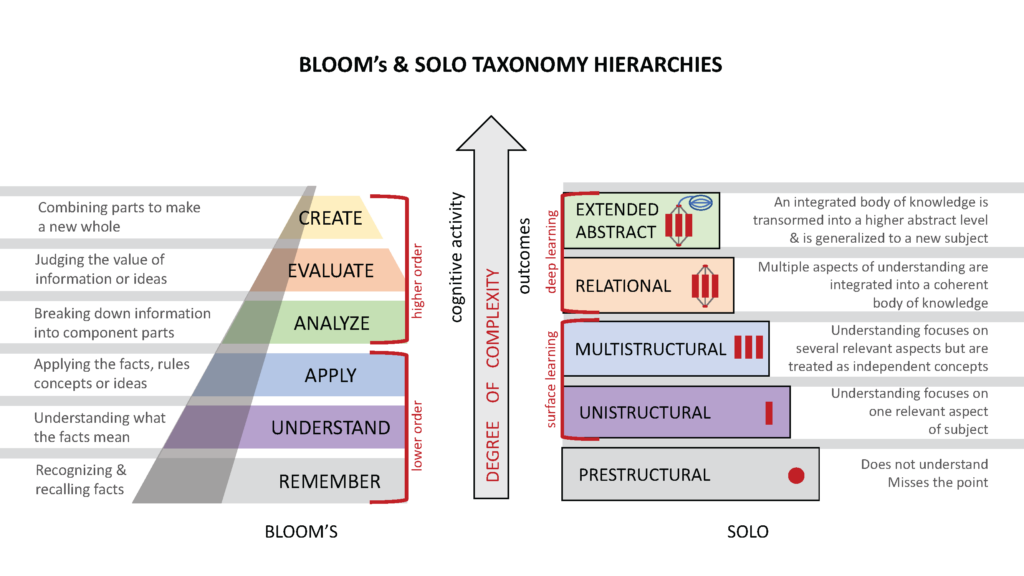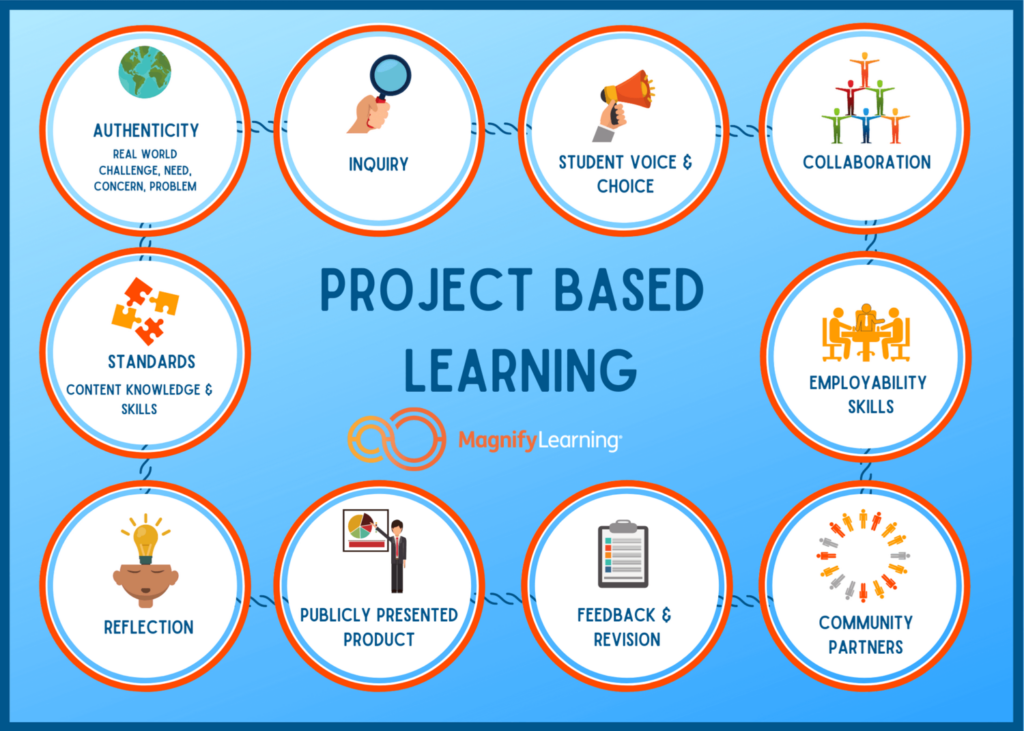Blog Post #2
Introduction
For this week’s module, we were presented with many different ways in which educators design the ways we learn. There were many different frameworks that we learned about in this module, such as backward design, design thinking, learning taxonomies, amongst others, all of which are unique and insightful in the ways that they can help learners understand concepts in more nuanced ways. In this post, viewers will find many different ways in which learning can be designed to help learners achieve the best possible outcome from the content that you may design your teaching style around, as well as methods that learners can adopt to best retain information taught to them.

Backward Design and Understanding
What this part of my blog will speak of is, the concept of learning through backward design. This is the idea that learning should be taught with a goal in mind, not just “Get an A+” or “Be able to do Chemistry”, but more so a clear and defined goal in the mind of the teacher that is designing the material, and creating steps within the curriculum to ensure that those that are being taught are able to reach this goal. The reason why this is such a valuable way to teach and to be taught, is because teaching in this manner ensures that the curriculum has a clear and concise end point for all those being taught to reach. Adhering to the idea of an end goal will filter out much of the jargon that is sometimes put into curriculum that serve no purpose to the true goal of the course material. Essentially having an end goal in place for any form of teaching, will allow the person teaching to center their curriculum around this end goal, sort of creating a path for the course to follow.

There has not been many times when I have been taught in this style, but one example that comes to mind when thinking of this teaching style actually extends beyond the classroom. This is actually from my job as a landscaper at the Fairmont Empress. From the moment I got hired as a landscaper at the Fairmont Empress, my Boss had set a clear goal for me to hopefully reach, and that is to be able to identify and care for every annual plant that we had on the property. To reach this goal, my Boss, as well as other coworkers would occasionally ask me questions like “which plant is this?” “Does this plant need more sun, or does it prefer shade?” amongst many other types of questions. At first I felt a little overwhelmed, just from the sheer quantity of varieties of different plants that we had on the property, but 3 years later, I feel very confident in knowing all the annuals that we have on the property, and if a guest or tourist asks me how they should care for that same plant that they have at home, I feel fully confident in giving them advice.

Design Thinking

Design thinking is a framework that is actually used by many companies to design their products, but it can be adapted to be used in contexts such as the classroom. What this framework emphasizes is the importance of understanding what the needs of the target audience are, and then creating ideas and solutions to those needs. This opens up many new possibilities for learning, as it may be hard to implement in a classroom with a curriculum that they must stick to, but in developing personalized learning plans, it is much more effective.
A time in which I had used something akin to this, was not in a traditional learning setting, but it was actually in a gym/weightlifting setting. For a time, I had struggled with weight loss, I used to be severely overweight, and it had taken its toll on my physical and mental health. My coworker who used to be a pro men’s physique athlete had asked if I wanted any advice when it came to losing weight, as he had known that I wanted to do so. When I said yes, he created a whole plan for me, but it wasn’t just a regimented, by the book plan, he created it with my goals in mind. He asked me questions on what my goals were, what my favourite foods are, how many times I could go to the gym, what my weaknesses are; he took this all into account, and then came back to me with a structured plan for the gym and in the kitchen. By him doing this, and truly understanding what I wanted, and what I needed to get there, his plan for me worked to great effect, and I am forever grateful that he created that plan for me.
Learning Outcomes and Bloom’s/SOLO Taxonomies
For this topic, we are talking more of the language that comes with learning, and that is the verbiage and action that can come from assessments amongst other types of learning. For Bloom’s taxonomy, it is more about the application that comes from what has been taught. Rather than simply asking the ones being taught to remember and recall, they are instead asked to engage more deeply in the material that has been taught, such as analyzing an article, or critiquing.
For the SOLO Taxonomy, this is the method of teaching that instead calls upon the educator to allow the students to go more in depth with their learning. This starts off with a basic broad idea, such as something like “What are the traffic laws in Victoria?” to a more in depth and reflective question that will show how much of what has been taught is resonating with the student: “What are the different punishments for traffic law violations, and how may one find ways to adhere to them at all times?”.
For me personally, I find Bloom’s taxonomy to be more effective. I find that application of learning is far more effective in learning, as opposed to the slow progression of tasks/verbiage of SOLO taxonomy. By diving deeper into a topic, you will grow a sort of attachment to said topic, and be able to engage more deeply in your learning.

Better Learning Design
Concepts of Better Learning Design were discussed within this module, such as Learning by doing, surface vs. deep learning, and constructive alignment. Learning by doing is simply the idea that students will learn better by actively engaging in the topic at hand, rather than having material spoken to them. Surface vs. deep learning are more so terms to reflect whether information has truly been retained by the student being taught. Surface level learning is when a student has the ability to recall and memorize what has been taught without deeper engagement. Deep learning is when a student not only can remember what has been taught, but is actively able to engage in discourse surrounding the topic, such as evaluation or critique. Constructive alignment is a concept in learning where a course of learning should be constructed in a way that aligns with the material and goal in mind; making sure that all course material surrounding the topic at hand is aligned.
For me, a time when I had experienced surface vs. deep learning is when I was trying to learn how to drive. When I was studying for my Learner’s driver’s license, I was using the ICBC app, and just learning to memorize the certain aspects of driving that would come up on the L test. I was able to recall the right and wrong answers, but that was it, I was not able to reflect as to why these laws and rules of the road were in place. This changed when I was actually behind the wheel and able to learn by driving. I came to understand why these laws were in place by actually adhering to these laws, for example, one law had always seemed silly to me when I was learning, that was that you must go slower around vehicles with flashing lights (hazards) on the side of the road or shoulder. But by actually seeing a car with this condition, and driving around it, I came to understand why we had to do it, that it was for the safety of everyone.
Inquiry and Project-Based Learning

The final concept that was present in this module was Inquiry and Project-Based Learning. Inquiry-based learning is the method of learning that starts students having open-ended questions, and taking one of these questions and investigating it on their own. Project-based learning is what the name suggests, as students are tasked with a project that are often authentic and meaningful.
For me, these forms of learning are ones that I am really used to, mostly the Inquiry-based learning model, as the root of Philosophy projects and essays are often open-ended questions e.g., “What would Plato have to say about modern democracy?”. Questions in philosophy are often related to open-ended inquiry that play off the student investigating the views of the author at hand and being able to craft them into our own views.
The benefits that come with this form of learning are that the students feel attached to the material, and are able to really connect with it. They are able to find knowledge in their own way and feel a sense of accomplishment knowing that they were able to discover this knowledge on their own. Despite the benefits, there are still some hiccups that could hinder the effective use of these styles of learning. These could include the open-ended question or project not truly resonating with the student, causing a lack of interest and therefore effort. Another challenge that can come from these forms of teaching is the assessment process, as grading these types of learning can be quite difficult.
Conclusion
To conclude this blog, there are many forms of learning that we can adapt into our teaching structures to ensure that students can retain the most information, and enjoying learning on their way there.
